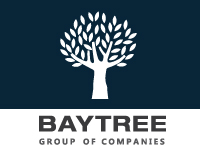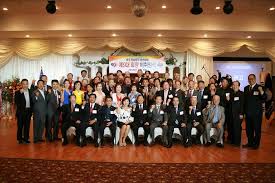CA
ON
한인 시니어 탁구협회
전화: 647-209-8933
1100 Petrolia Rd Toronto, ON
4.jpg)
럭키 여행사
전화: 416-938-8323
4699 keele st.suite 218 toronto Ontario M3J 2N8 toronto, ON

홍이표치과
전화: 647-985-0456
9625 Yonge St #4, Richmond Hill, ON Toronto, ON
1.jfif)
스마트 디지탈 프린팅 - 인쇄 및 디자인
전화: 416-909-7070
4065 chesswood dr. Toronto, ON
.jfif)
1004열쇠
전화: 416-895-1004
4 Blakeley Rd. Toronto, ON

준비된 바이어 그룹 , BAYTREE 이너써클
전화: 416-226-5999
7030 Woodbine Ave. Suite 103 Toronto, ON

호남향우회 (토론토)
전화: 647-981-0404
7 Bishop Ave. #2411 Toronto, ON

싸인건설
전화: 416-909-7070
4065 Chesswood Dr. North York, ON
0.jfif)
부동산캐나다 (Korean Real Estate Post)
전화: 416-449-5552
1995 Leslie Street Toronto, ON
.jfif)
행복부동산 -수잔정 Home Standards Brickstone Real
전화: 647-866-7878
180 Steeles Ave W Unit 30, Thornhill, ON

놀부 - 한식/일식/중식
전화: 416-221-4700
3 Elmhurst Ave, North York, ON

골프 싱글로 가는길
전화: 647-291-2020
115 York Blvd Richmond Hill Toronto, ON

It would be a place where all the visitors including me share the life stories and experiences through their activities,especially on life as a immigrant.
Why don't you visit my personal blog:
www.lifemeansgo.blogspot.com
Many thanks.
블로그 ( 오늘 방문자 수: 127 전체: 267,690 )
굶주림속의 지옥 북한,주체의 선전,어디가 끝이고 언제 끝날까?(LA times)
lakepurity
2008-11-02
친애하는 수령님 동상앞에서 허리를 굽혀 수령님께 인사드리는 많은 북한 사람들의 바지가랭이
밑으로 보이는 발목에는 추운 날씨인데도 맨발인것이 환히 들여다 보였다.
앵무새 처럼 외쳐대는 이들의 추운 겨울을 김정일이는 알고 있는가?
그들의 마음속에 품고 있는 적의를 김정일이는 알고 있는가?
얼마나 더 이지옥같은 인민들의 생활을 김정일이는 즐길 것인가? 아뿔사...
이제는 때려 칠때가 되지 않았겠읍니까? 신이시여....굽어 살펴 주시옵소서.
North Korean facade of self-sufficiency can't hide signs of hunger
In the countryside, listless adults and children wander about. Many in the isolated nation try to work the fields, but lack fertilizer and equipment.
By Barbara Demick
November 2, 2008
Reporting from Nampo, North Korea -- Along the sides of the road, people comb through the grass looking for edible weeds. In the center of town, a boy about 9 years old wears a tattered army jacket hanging below his knees. He has no shoes.
Sprawled on the lawn outside a bathhouse, poorly dressed people lie on the grass, either with no better place to go or no energy to do so at 10 a.m. on a weekday.
Despite efforts to keep North Korea's extreme poverty out of view, a glance around the countryside shows a population in distress. At the root of the problem is a chronic food shortage, the result of inflation, strained relations with neighboring countries and flooding in previous years.
Aid agencies say the level of hunger is not at the point it was in the 1990s, when it was defined as a famine, although they have found a few cases of children suffering from kwashiorkor, the swollen belly syndrome associated with malnutrition. Mostly what they are seeing is a kind of collective listlessness -- the kind shown by the people on the streets of Nampo.
"Teachers report that children lack energy and are lagging in social and cognitive development," reported a group of five U.S. humanitarian agencies in a summer assessment of the food situation. "Workers are unable to put in full days and take longer to complete tasks -- which has implications for the success of the early and main harvests."
Hospitals complained to aid workers of rising infant mortality and declining birth weights. They also said they were seeing 20% to 40% more patients with digestive disorders caused largely by poor nutrition.
The U.N. World Food Program reached similar conclusions. In a recent survey of 375 households, more than 70% were found to be supplementing their diet with weeds and grasses foraged from the countryside. Such wild foods are difficult to digest, especially for children and the elderly. The survey also determined that most adults had started skipping lunch, reducing their diet to two meals a day.
These are some of the same signs that augured the mid-1990s famine, which killed as many as 2 million people, 10% of the population.
"The current situation hasn't reached the famine proportions that it did during the 1990s. Our hope and goal is to keep it from going over the precipice," said Nancy Lindborg, president of Mercy Corps, one of the U.S. aid organizations working in North Korea. "You have a number of factors that have conspired to create a really tough food situation."
In Pyongyang, the capital, residence in which is reserved for the most politically loyal North Koreans, plenty of food is available on sale. A grocery inside the Rakwon Department Store carries Froot Loops and frozen beef. At open-air markets, you can find mangoes, kiwis and pineapples
But the products are far too expensive for most North Koreans, whose official salaries are less than $1 a month -- 60 to 75 cents monthly for the workers surveyed by the World Food Program. And the farther you get from Pyongyang, the poorer are the people.
Nampo is 25 miles southwest of the capital, on the Yellow Sea. It used to be a thriving port city, but nowadays its harbor is used mostly for shipments of humanitarian aid. On a weekday morning, many people sit along the sidewalk watching the few cars pass by. They appear to be unemployed or homeless.
The shoeless child walked through the center of town across the street from the flashiest building in the city, a pink structure with a triangular roof that houses an exhibit of Kimjongilia, a hybrid breed of begonia named for North Korean leader Kim Jong Il. A parking lot next to the main department store is carpeted a golden yellow from corn that has been laid out to dry.
Every available patch of land appears dedicated to the production of food. Irregular shaped plots encircled by highway exits, even slivers sloping down between houses and the road at 45-degree angles, are planted with vegetables.
Much of the population has been enlisted in producing food. On a Friday morning at rush hour, the sides of the road out of Pyongyang were lined with office workers marching out to the countryside to help with the harvest. Many were middle-aged women with pocketbooks and clothing that made them look as though they were off to a business meeting, except for the fact that some carried shovels.
The food shortage is not from a lack of effort so much as from a dearth of proper equipment and fertilizer, combined with the naturally harsh climate and terrain of the countryside. Much of the rice crop is lost because the collective farms are using threshing machines dating to the 1960s and '70s.
In the fields, there were only a few skinny oxen and almost no motorized vehicles. Trucks in the countryside had been retrofitted to burn wood instead of gasoline. People carried large sacks on their backs, walking along a path of rusted railroad tracks where no train could now travel. Guard posts were erected in the cornfields, evidently to prevent theft.
The entire countryside had a strong odor from the "night soil," or human waste, used as fertilizer.
North Korea's souring relationship with South Korea is a major problem. The conservative new government in Seoul this year withheld a planned shipment of 300,000 tons of fertilizer. Moreover, prices for fertilizer on the private market have skyrocketed because China closed many of its production facilities in its northeast to clear the air for the 2008 Summer Olympics in Beijing.
In addition, China has enacted heavy export taxes on fertilizer and grain to prevent inflation at home during a period of worldwide economic instability.
At the same time, North Korea's rigidly Communist regime has banned the sale of grain on the private market. The government has also restricted private market activity with rules prohibiting women younger than 40 from working in that sector, on the theory that they should instead be working in state jobs.
Reporters driving through Nampo in a van were forbidden to take photographs until they had passed through the center of town. North Korea, which follows an ideology based on self-sufficiency, has long played down the extent to which it is dependent on foreign aid to feed the population.
North Koreans say that the food situation is improving and that a good harvest is expected this autumn, as a result of improved weather conditions. The last two years were disastrous because of heavy flooding.
"There was a problem before, but it is getting better. We expect a bumper harvest," said Choe Jong Hun, an official of the Committee for Cultural Relations With Foreign Countries.
North Korea experts, however, are skeptical. "One good harvest is not really going to alter the picture," said Stephan Haggard, a UC San Diego professor who has written widely on the North Korean famine.
The World Food Program and the U.S. aid organizations are providing food for the most vulnerable, including children and pregnant women. A U.S. ship carrying more than 27,000 tons of bulk corn and soy is slated to arrive in Nampo within days.
International agencies have been trying to raise money to expand their food aid to the general population. Many urban North Koreans are dependent on food rations, which have dwindled to 150 grams a day, or a little more than 5 ounces.
Even in Pyongyang, one can see signs of scarcity behind the facade of what is supposed to be a showcase capital. Foreign residents say they have seen homeless children in the last few months -- a notable sight in a totalitarian country where nobody is supposed to wander away from their legal residence.
At the 82-foot-high statue of the nation's founder, Kim Il Sung, a delegation of soldiers looked well-dressed in their uniforms as they approached with a bouquet of flowers.
But when the men bowed down to show their respects, their pants hitched up just enough to reveal that many had no socks.
Demick is a Times staff writer.